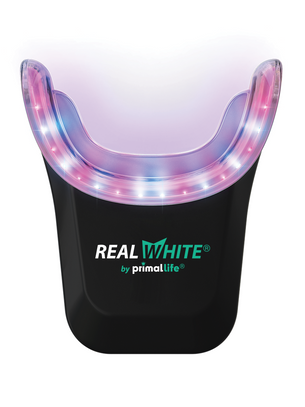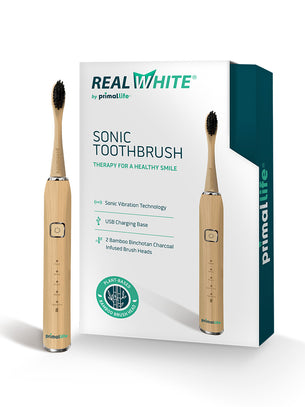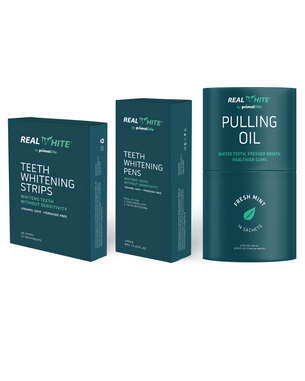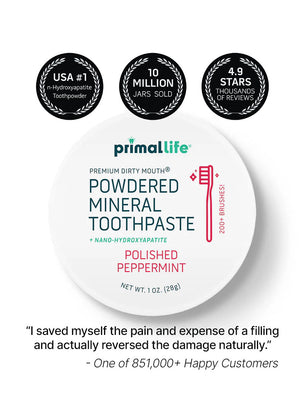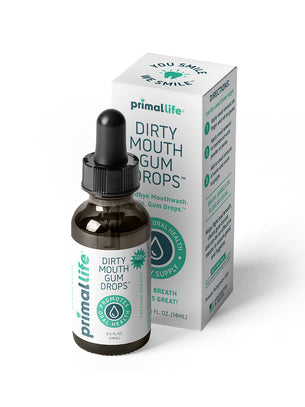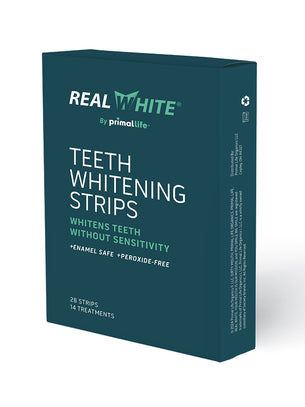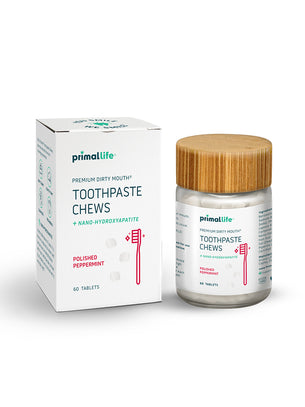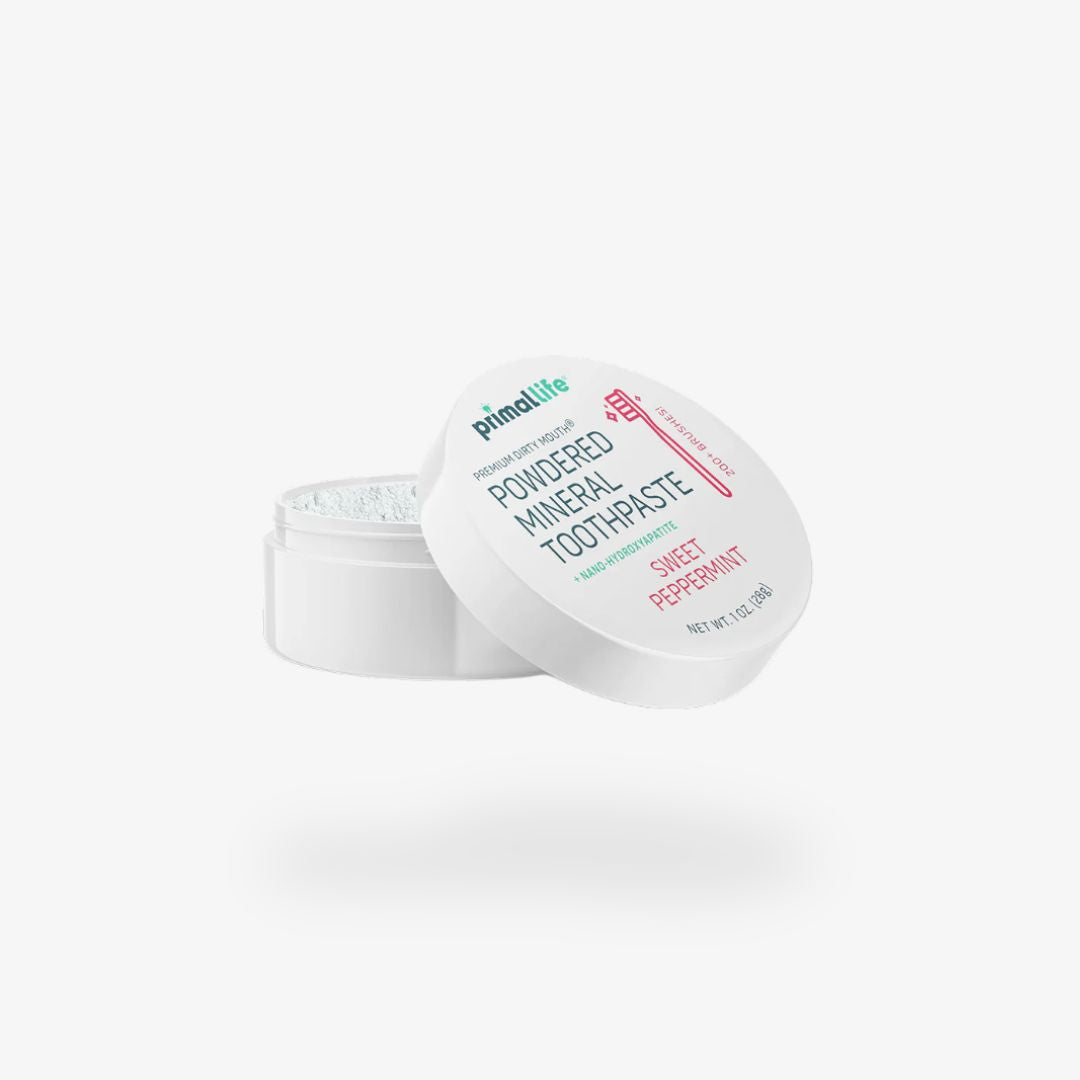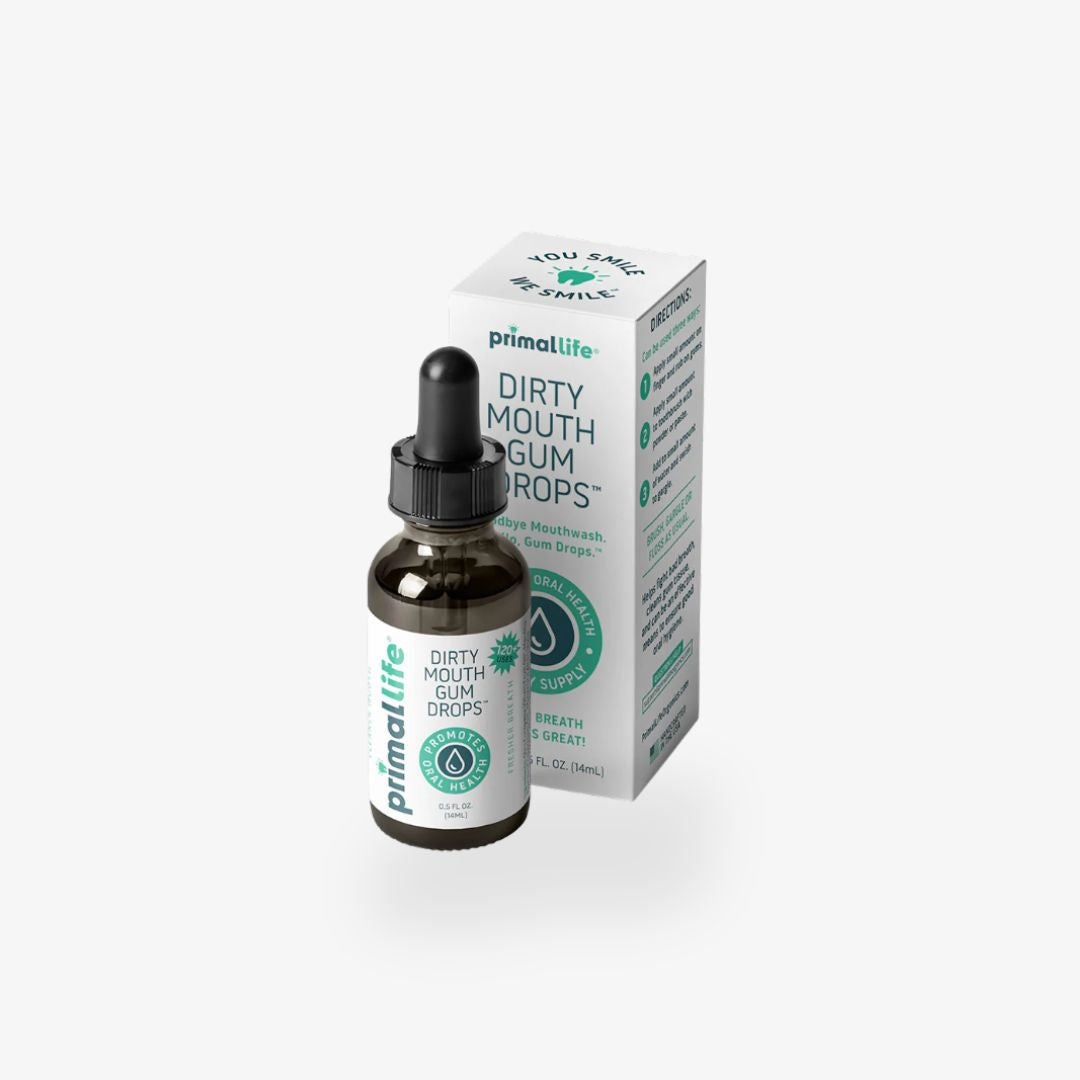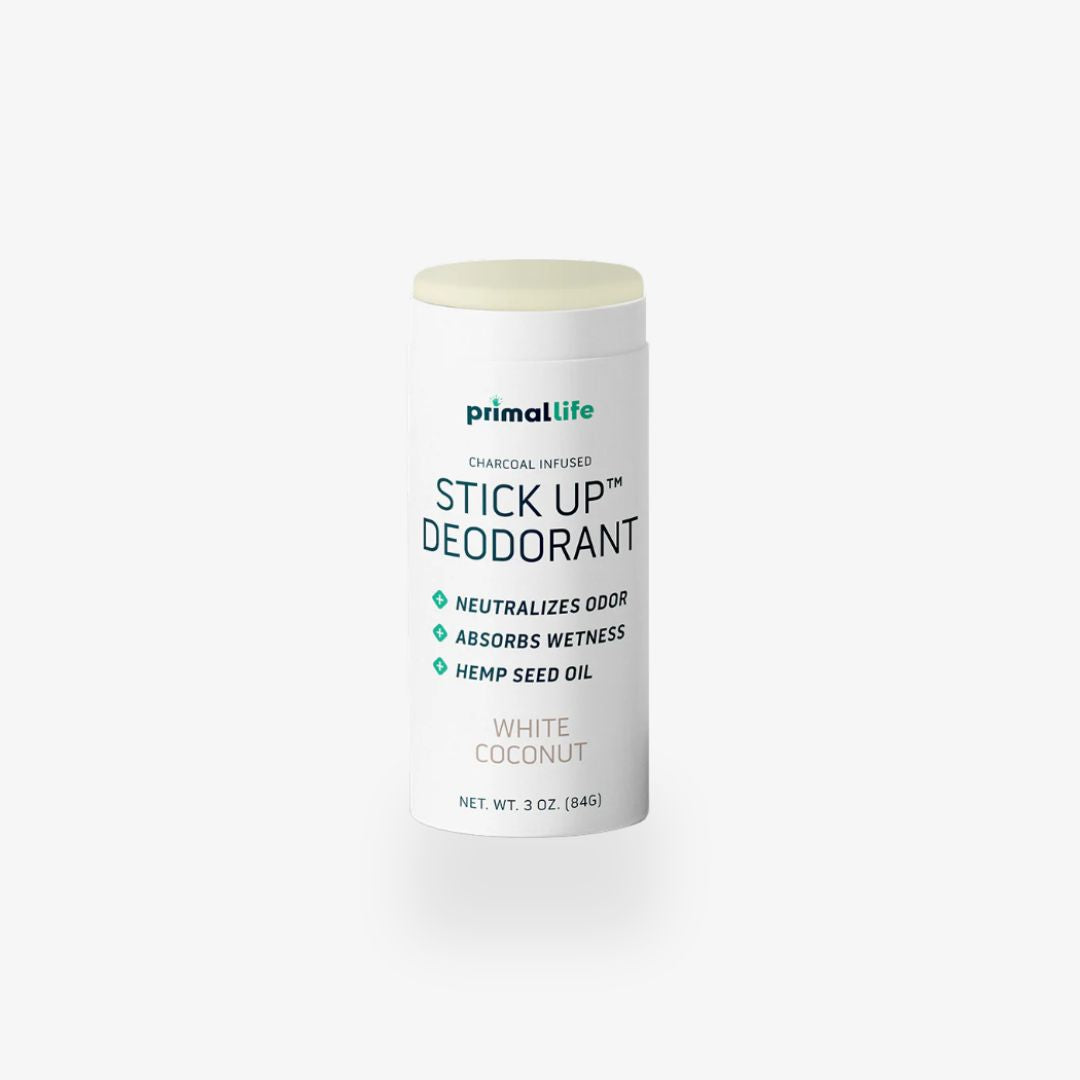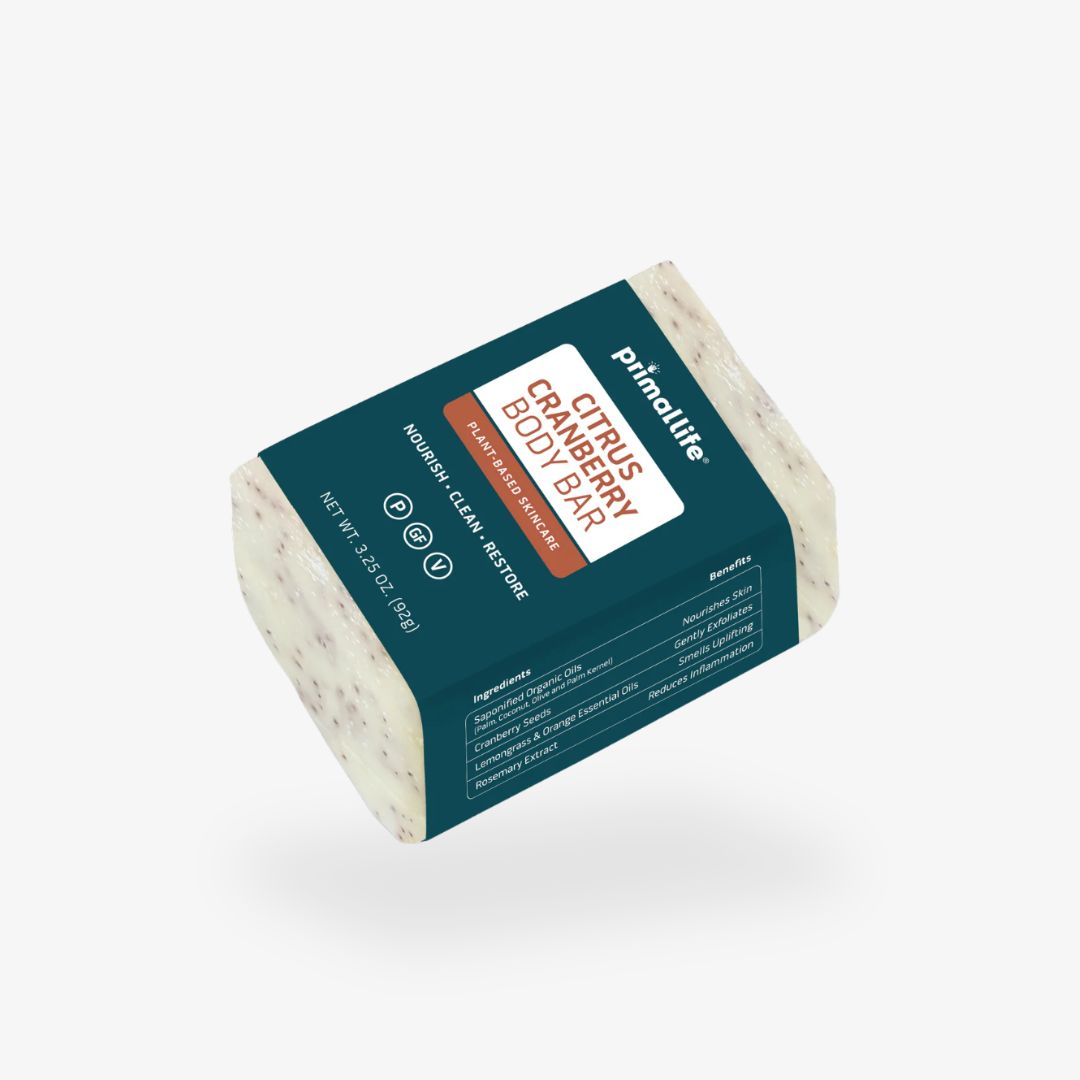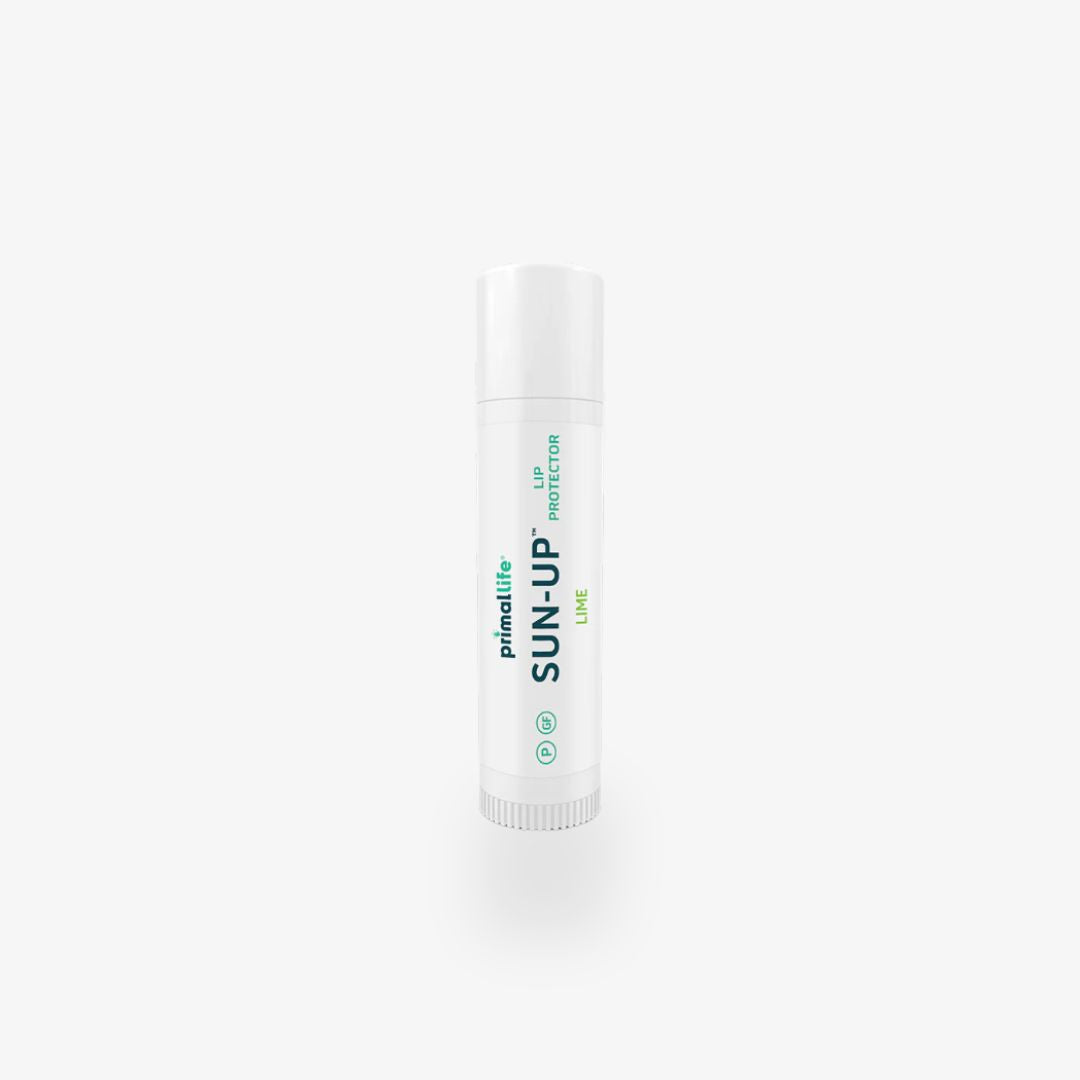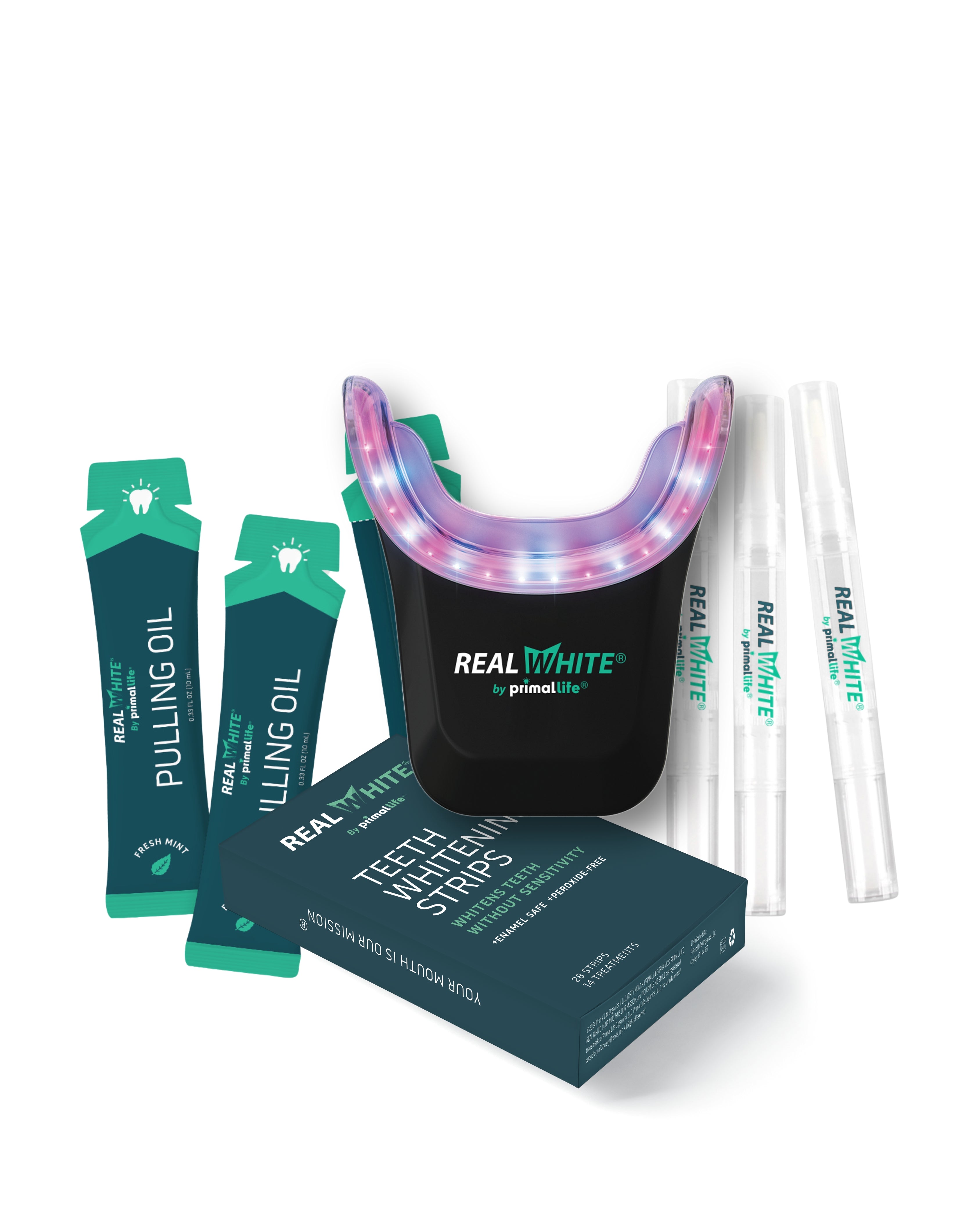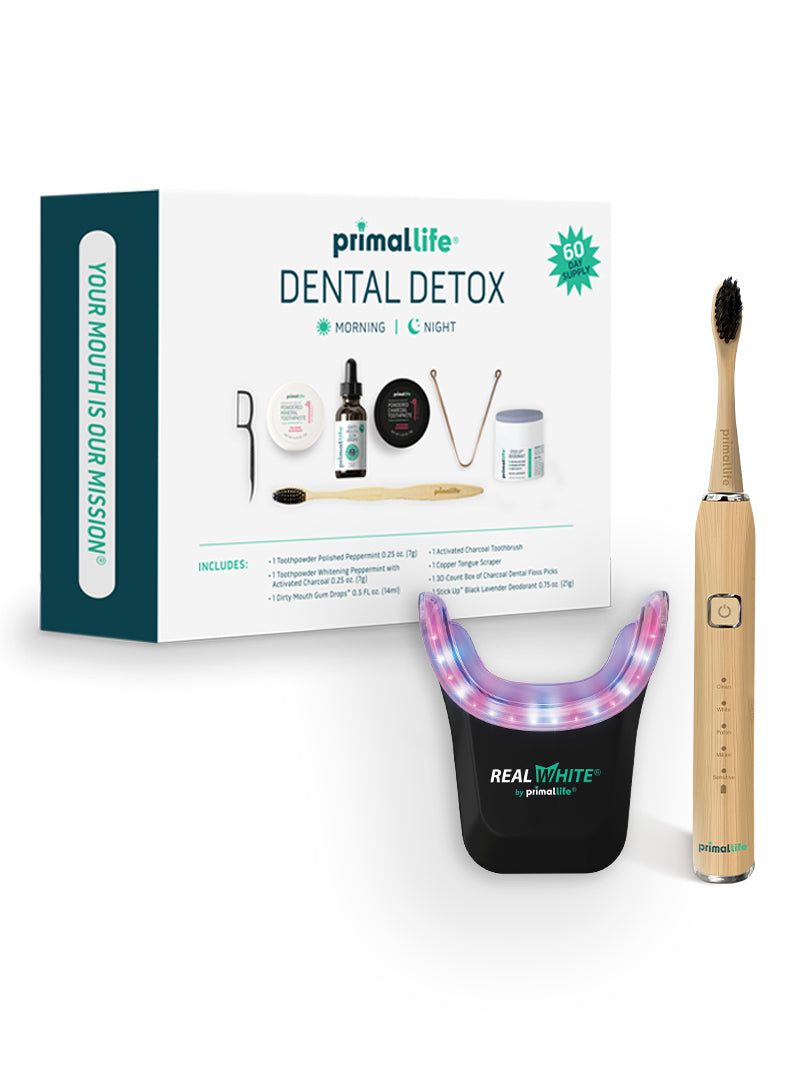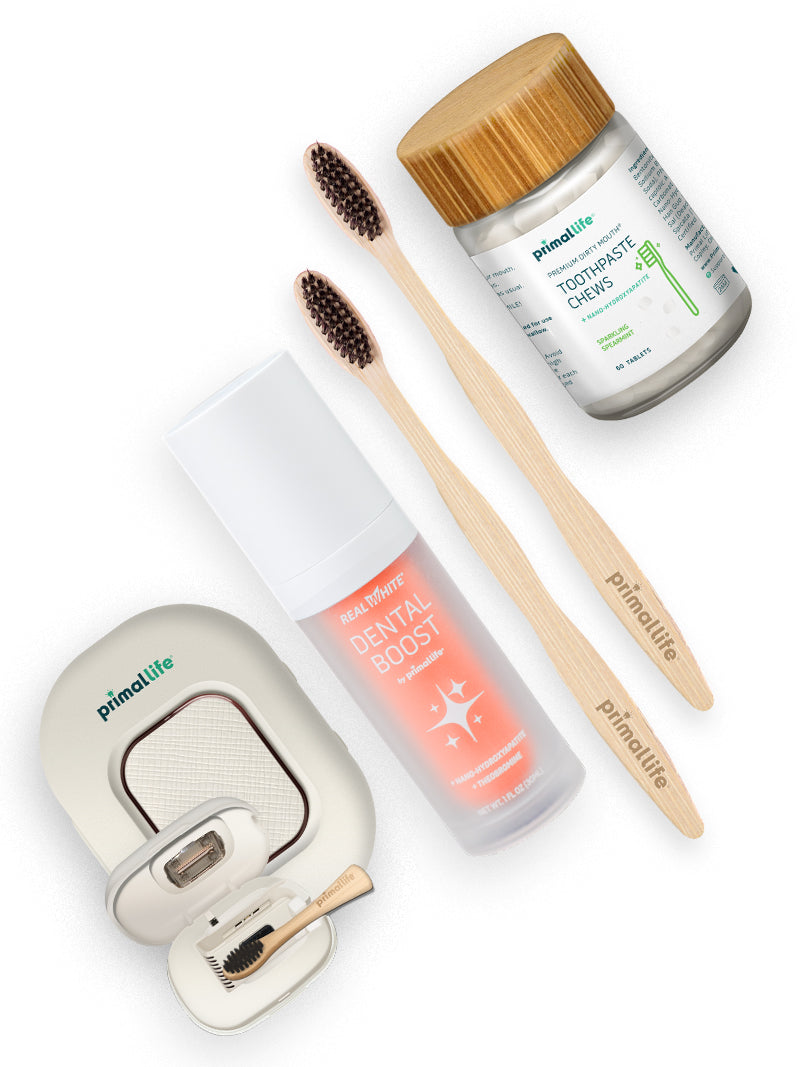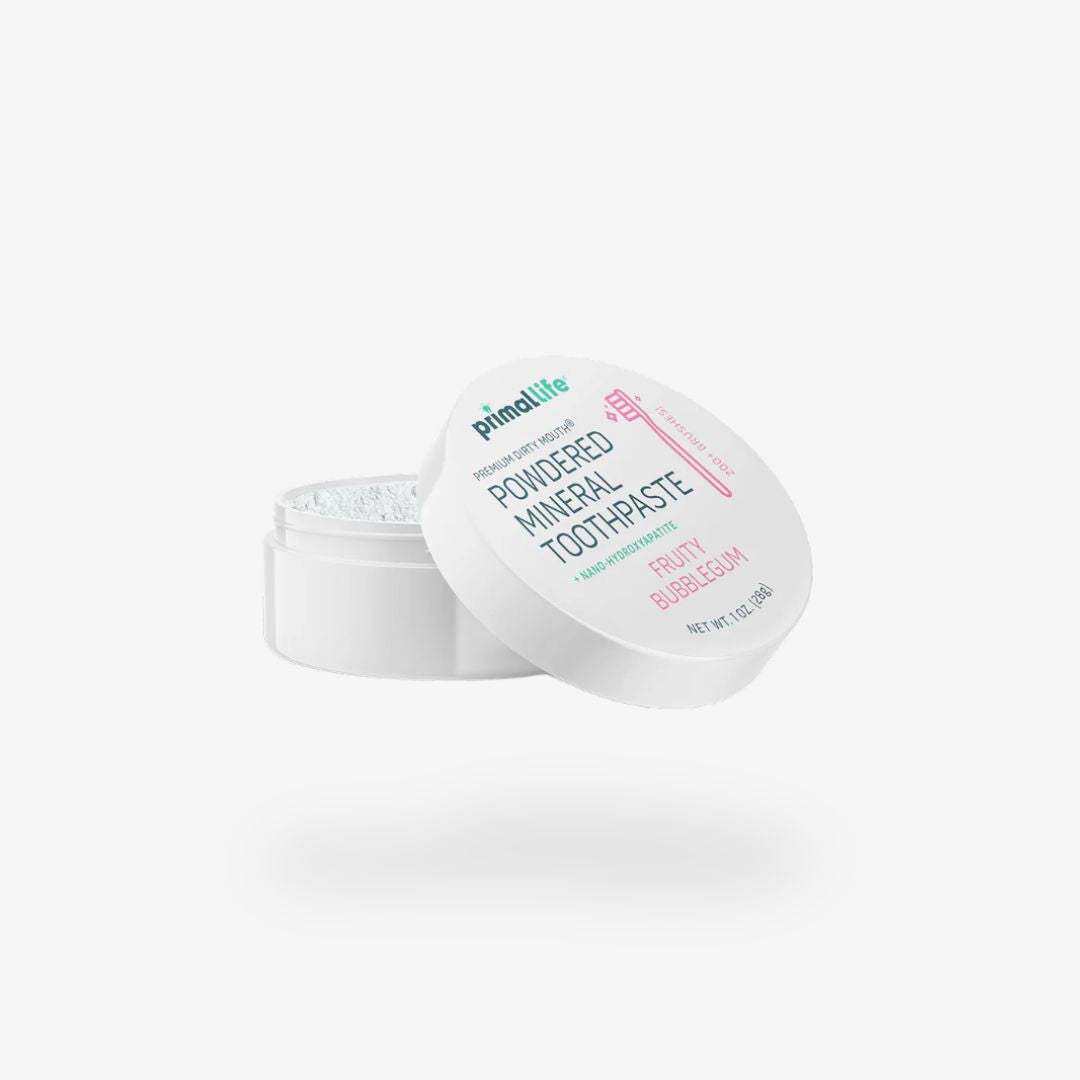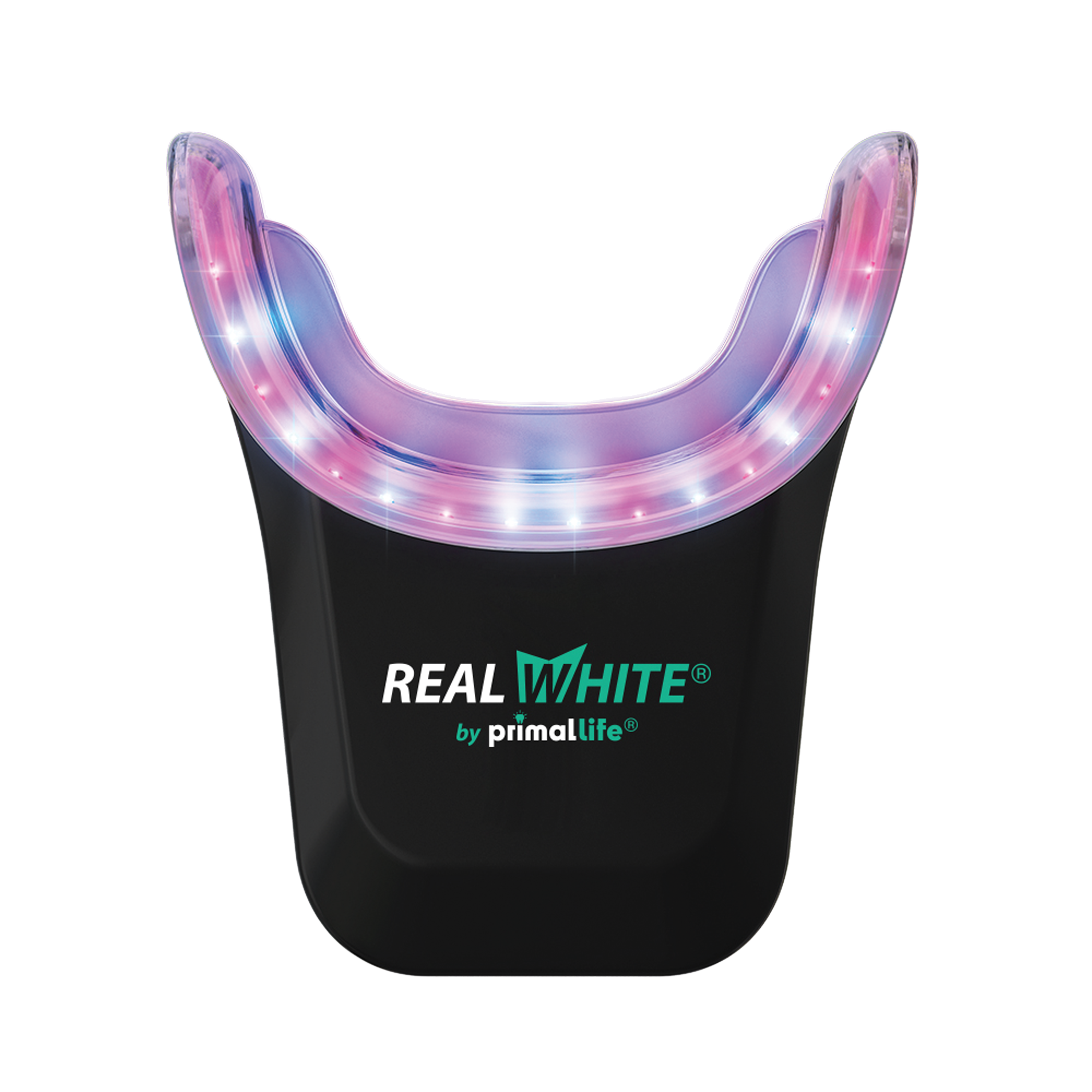You deserve to smile proudly, laugh without hesitation, and handle conversations with confidence.
But you can’t do any of that with brown and yellow discoloration ruining your smile.
Wondering how to get rid of yellow teeth? Don’t spend a fortune on whitening strips or messy gels before you learn the truth about commercial whitening products and explore the power of natural whitening remedies.
What Causes Yellow Teeth?
Even without ideal genetics, your teeth didn’t emerge looking brown and yellow. That discoloration happened over time due to a combination of factors in your life. Diet, age, health, and lifestyle habits have all played a role in creating the smile you’re now forced to hide in every picture and conversation.
What You Eat and Drink
Food and drinks are the most common culprits of staining to the outer layer of your teeth. Coffee, wine, soda, and other dark-colored favorites contain potent pigments that bond to and stain tooth enamel, leaving your smile looking dull and unattractive.
Here are a few of the worst offenders:
- Black coffee and tea
- Soda and dark juices
- Dark condiments like soy sauce
- Red wine
- Dark berries
It’s also possible for discoloration to occur without those culprits. If most of your diet consists of processed foods loaded with sugar and acid, your teeth are more vulnerable to plaque, cavities, and decay, all of which exacerbate the appearance of stains.
Poor Oral Care
Your teeth and gums are exposed to everything you eat and drink — the good, the bad, and the ugly. If you fail to brush and floss regularly, it’s all too easy for bacteria, acid, and plaque to accumulate and harden into tartar. Plaque and tartar both create an unsightly yellow coating around your teeth that leads to other issues like bad breath, decay, and tooth loss.
Fortunately, it can all be avoided with better oral hygiene! Brush, floss, see your dentist twice a year.
Age and Health
It’s not just wrinkles that plague you as you get older. Age-related discoloration is almost impossible to avoid because enamel thins with age and reveals more of each tooth’s underlying yellow dentin. When you combine this effect with the culmination of 60 or 70 years of food and beverage stains, the results can’t be ignored.
Unfortunately, many medications can also cause tooth discoloration as a side effect. Antibiotics like tetracycline and amoxicillin, as well as drugs used for allergies and high blood pressure, are just a few.
Poor Habits
Before smoking damages your health, it’ll turn your smile an unpleasant shade of yellowish brown. The same goes for eating too much sugar; before diabetes threatens your bloodstream, all of that sugar will have already gone to work deteriorating your teeth.
Want to Prevent Yellow Teeth? Here Are the Top 4 Things to Avoid
Your teeth and your skin have pores that eagerly absorb surrounding substances. Tooth enamel also contains microscopic pits and ridges that trap tiny food and drink particles. Long-term exposure to the dark pigments from these substances and particles inevitably causes yellow and brown staining.
This doesn’t sound like great news, but there’s a silver lining! You can reduce and prevent the stains on your teeth simply by controlling what touches your teeth. Start by avoiding the following beverages and bad habits.

Coffee and Tea
If you’re shaking just thinking about sacrificing your daily cup of coffee or tea, you’re hardly alone. More than 80% of adults in America drink coffee regularly, and 2 billion people around the world drink tea every morning. We love caffeine, but we also love white teeth… and therein lies the problem.
Cutting coffee and tea from your beverage rotation is an easy way to get rid of yellow teeth, but if you’re not ready to make that sacrifice, it’s important to swish with water after you indulge. Try sipping water after each sip of coffee or tea and make it a priority to brush and rinse your teeth when you’re done.
Red Wine
Red wine threatens your teeth with a double whammy: dark pigments and high acidity. Grapes used to make red wine contain dark anthocyanin pigment and tannins. The tannins enhance your favorite red wine’s astringency but also, unfortunately, make it easier for the dark pigments to bind to your teeth. Meanwhile, the acidity of red wine gradually etches away at your enamel and makes it easier for the stains to stick permanently.
If you want to relax with a glass of Merlot without feeling plagued by guilt, gently brush your teeth about 30 to 60 minutes beforehand. Brushing removes plaque that can exacerbate the appearance of stains. It’s also helpful to periodically wipe away the “wine film” that covers your teeth as you drink. Wiping the film off your teeth prevents buildup and removes a large portion of pigments before they’re absorbed into your enamel. Make sure to also rinse with water after your glass is empty.
Tobacco
Can I just say… duh? Everyone, including smokers, knows smoking is an awful habit. If you haven’t managed to quit yet, maybe the promise of a brighter, whiter smile will encourage you to finally throw your last pack in the trash.
The nicotine and tar in tobacco are like the evil villains that conspire against your healthy, white teeth. Both substances can be easily absorbed by the pores in your teeth to cause unsightly yellow and brown discoloration. And don’t be fooled into thinking you’re safe from staining if you vape, because all “ejuice” still contains nicotine, which turns yellow when combined with oxygen.
You might have some teeth with darker stains than others based upon your method of tobacco use and inhalation habits. Tobacco stains are some of the most difficult to remove because they develop over years of smoking, giving discoloration plenty of time to settle deep into the enamel and penetrate the underlying layer of dentin.
That’s not all. Don’t forget that smoking puts your entire oral health at risk. Since smoking weakens your body’s immune system and stunts its ability to fight infection, you’re twice as likely to develop gum disease compared to a nonsmoker. The more you smoke and the longer you continue, the higher your risk for gum disease, tooth loss, and deadly infection.
It’s easy to say “just quit!” but smoking is an addiction that’s hard to break. Lean on the support of cessation specialists, doctors, support groups, and loved ones to make the choice that’s best for your body, mouth, and smile.
Soda and Juice
Soda and juice are the final two culprits responsible for your dark, dingy teeth. They’re also extremely high in sugar and acid, so cutting them out of your diet can brighten your smile and improve your overall health.
Soda, especially dark cola, bathes your teeth in sugars and acids that immediately begin to break down enamel and cultivate plaque. The dark pigment in cola also stains your teeth, especially if you drink it every day. This is a recipe for disaster. Since soda doesn’t offer a single nutritional benefit, it’s best to steer clear of it altogether.
The same goes for dark juices like grape and cranberry. They’re concentrated sources of very dark pigments that stick to your teeth like Velcro. Of course, juice also contains high levels of sugar and acid that contribute to stains and cavities. It’s much better to get your serving of fruit from whole, fresh fruits instead, then rinse with water to wash away dark pigments.

The Dangers of Traditional Teeth-Whitening Products
With so many potential causes of discoloration, you’re probably wondering how to get rid of yellow teeth quickly and easily. A quick walk around your local drug store may leave you tempted to purchase a traditional teeth-whitening system formulated with peroxide. But don’t do it!
Commercial teeth-whitening products can cause serious damage to your mouth, like lasting sensitivity and soft tissue burns. Before you select a tooth-whitening solution, you deserve to know the truth about most products sitting on store shelves.
Harmful Bleaching Chemicals
Carbamide peroxide is the main ingredient in the majority of standard teeth-whitening products. It’s used because it breaks down into hydrogen peroxide and bleaches the color of your teeth through chemical reaction. The ADA considers this a safe way to brighten teeth, but you don’t have to look far to find adverse reactions.
Research shows that strong whitening products can burn the soft tissue of the gums and create painful irritation. Worse yet, the whitening products we’ve been told to use and trust are known to weaken the enamel and dentin responsible for making our teeth strong and white.
A growing body of research proves the dangers of peroxide whitening products:
- Make enamel increasingly porous, which makes future staining easier
- Steal minerals from teeth and reduce protein concentration
- Weaken teeth by disrupting calcium ratio
All of this means that repeated use of commercial whitening products puts your teeth at risk of becoming weak, brittle, and irreparably damaged.
Chronic Sensitivity
Peroxide can bleach your teeth white, but it comes at a steep cost: painful, often unbearable sensitivity. It’s not uncommon for commercial whitening treatments to have a 20% to 35% concentration of peroxide in order to create rapid results. This level of peroxide exposure creates tooth sensitivity with the gut-wrenching zing you feel when you eat something hot or cold.
Whitening causes painful sensitivity because the peroxide must penetrate your hard tooth structure and interact with nerves in order to oxidize the molecules causing staining. A quick Google search for “tooth whitening sensitivity” will show you that this problem is widespread, yet for some reason we keep trusting traditional tooth whitening systems and allowing them to cause us pain.
What Are the Best Natural Remedies for Yellow Teeth?
Don’t surrender to your stained teeth or accept discoloration as a fact of life. Even decades worth of yellow and brown stains can be reversed with the right remedies!
Choose Your Snacks Strategically
The foods you eat have a lot of power over your body, including the color of your teeth. Unlike sodas and juices that weaken your enamel with acid and darken them with strong pigments, many mouth-friendly foods can strengthen your enamel and protect your teeth from stains.
Next time you reach for a snack, choose from fresh, high-quality options like these:
- Calcium from yogurt or milk
- High-magnesium foods like apples, pears, and leafy greens
- Eggs
- Sweet potatoes, squash, or carrots
- Nuts and seeds
- Strawberries
- Other fruits and veggies with high water content
You have to eat, so why not make choices that will improve your smile and your overall health?
Brush With Baking Soda
Baking soda is a common ingredient in natural toothpaste because it provides extra scrubbing power. In addition to normal brushing, you can use plain baking soda once a week to scrub away surface stains on your teeth. Just make sure you only use this natural hack periodically; baking soda is an abrasive material that can hurt your teeth if used regularly.
As a bonus, baking soda also helps cultivate a more alkaline oral environment in your mouth. Its high pH counteracts the low pH of acids and reduces the formation of plaque and bacteria along your teeth and gums.
Make Activated Charcoal a Regular Part of Your Routine
A dark black powder to whiten your teeth? You might think I’m crazy for recommending it, but it’s just crazy enough to work!
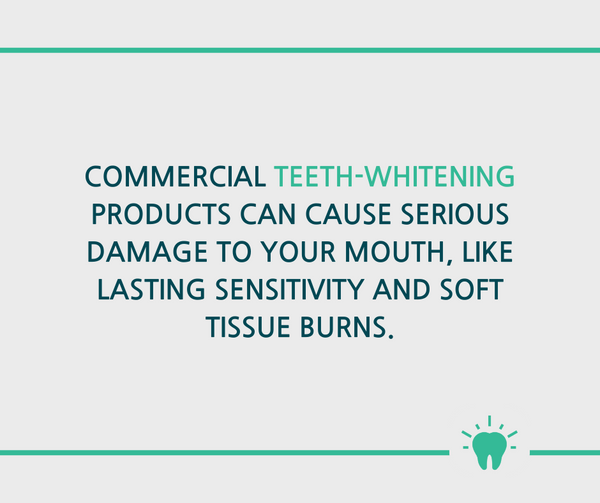
Activated charcoal is a fine black powder with powerful adsorptive properties. In order words, when activated charcoal comes in contact with your teeth, it immediately bonds to the molecules responsible for all those yellow and brown stains. After the toxins and discoloration-causing molecules are pulled gently out of your teeth, you can spit them right into the sink.
But that’s not all! The impressive properties of activated charcoal also include the ability to balance the pH of your mouth back to a level between 6.2 and 7.6. All of the acidic foods and beverages that we commonly enjoy like coffee, soda, and sugary treats increase oral acidity and help bacteria thrive. By controlling and recalibrating your oral pH, activated charcoal slows the bacterial overgrowth known to cause discoloration.
DIY Apple Cider Vinegar Swish
A simple remedy for stained teeth could be hiding in your kitchen cabinet. Apple cider vinegar is very popular in the natural health community thanks to its powerful properties and history as an ancient folk remedy.
In addition to killing bacteria, lowering blood sugar levels, and supporting weight loss, apple cider vinegar can also take on some of your toughest tooth stains. Combine a teaspoon of ACV with a ½ cup of water. Swish for 30 seconds, spit, and rinse. Just be sure to avoid overusing this natural remedy because ACV is highly acidic and can erode enamel if misused.
Daily Oil Pulling
Oil pulling is a traditional Indian folk remedy that recently entered the spotlight as a modern-day natural oral health trick. Using nothing more than coconut oil, this simple technique improves oral hygiene, removes toxins from the mouth, and helps your teeth look a few shades whiter.
Oil pulling is simple — place a spoonful of oil into your mouth and swish for 20 minutes. Once time is up, spit the oil into the trash and rinse your mouth. The damaging toxins, bacteria, and debris in your mouth will be pulled out by the oil, leaving your teeth and gums healthier and brighter.
At-Home LED Light Whitening
For whiter teeth without any bleach, tooth damage, or sensitivity, try a natural LED light whitening system. Instead of forcing harmful chemicals into the hard structure of your teeth, LED whitening harnesses the power of blue and red light to safely and naturally brighten your smile.
LEDs, or “light emitting diodes,” produce light differently than a standard incandescent or fluorescent light bulb. Though LEDs release extremely bright light when an electrical current is present, they don’t produce the wasted heat energy that other types of lights do. This makes it possible for LEDs to deliver total efficiency from the second they turn on.
LED light functions as a catalyst to the whitening process and accelerates the results of any natural whitening agent you apply to your teeth. Thanks to the power and efficiency of LED lights, you only need 10 to 20 minutes a day to see dramatic results.
How to Get Rid of Yellow Teeth With LED Light Whitening
Forget all about those inconvenient whitening gels and expensive whitening kits that name brands try to trick you into buying. As long as you have our LED Teeth-Whitening System with a natural mineral-infused gel, whitening your teeth can be simple, safe, and even fun.
We formulated a peroxide-free LED teeth-whitening system because I knew there had to be a way to remove ugly stains without sacrificing oral health. It’s simple enough to do in your sleep:
- Apply Real White® Whitening Gel made with nano-hydroxyapatite and xylitol directly to your teeth or to the mouthpiece (a little bit goes a long way!
- Insert the mouthpiece into your mouth and let your teeth rest lightly
- Wash dishes, read, or fold laundry for the next 15-20 minutes
- Remove mouthpiece and rinse with warm water
- Repeat three to four times per week at first, then limit to two or three times per week to maintain your results.
Now you know — you don’t need to sell your soul to the peroxide devil to get a beautiful white smile. Toss your old whitening strips and try safe, natural whitening instead.
Resources
https://www.usatoday.com/story/money/business/2013/04/09/coffee-mania/2069335/
http://www.teausa.com/14655/tea-fact-sheet
https://www.vox.com/the-goods/2018/12/18/18144794/what-causes-wine-teeth-explained
https://www.dentalhealth.org/smoking-and-oral-health
https://www.cdc.gov/tobacco/campaign/tips/diseases/periodontal-gum-disease.html
https://www.ncbi.nlm.nih.gov/pmc/articles/PMC4229680/?_ga=2.8520113.546738981.1553004399-1220425171.1553004399
https://www.ncbi.nlm.nih.gov/pubmed/20045265
https://www.colgate.com/en-us/oral-health/basics/nutrition-and-oral-health/healthy-foods-list-seven-best-foods-for-your-teeth-0214
https://www.ncbi.nlm.nih.gov/pubmed/10518866
https://www.ncbi.nlm.nih.gov/pmc/articles/PMC3466022/?_ga=2.16627894.1252143398.1512077656-970936839.1510722429
Read more
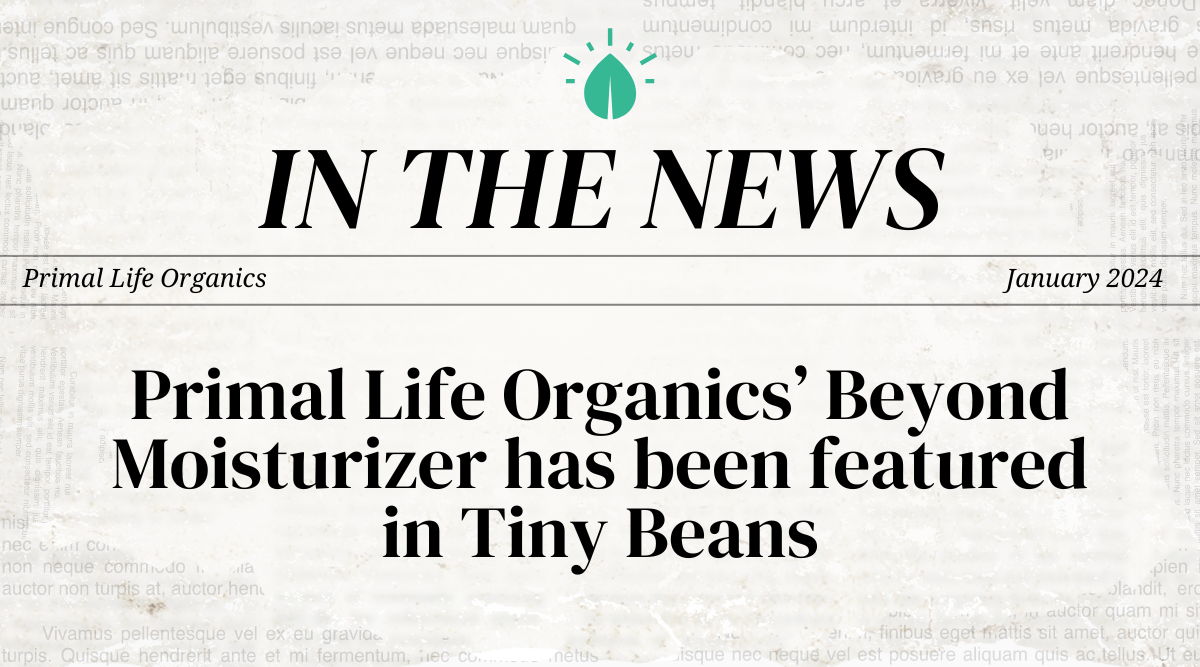
Primal Life Organics’ Beyond Moisturizer has been featured on Tinybeans (Digital) (UVPM: 2,097,396) in an article titled, “Your New Favorite Moisturizer Is on This List”. Here, Primal Life Organic...
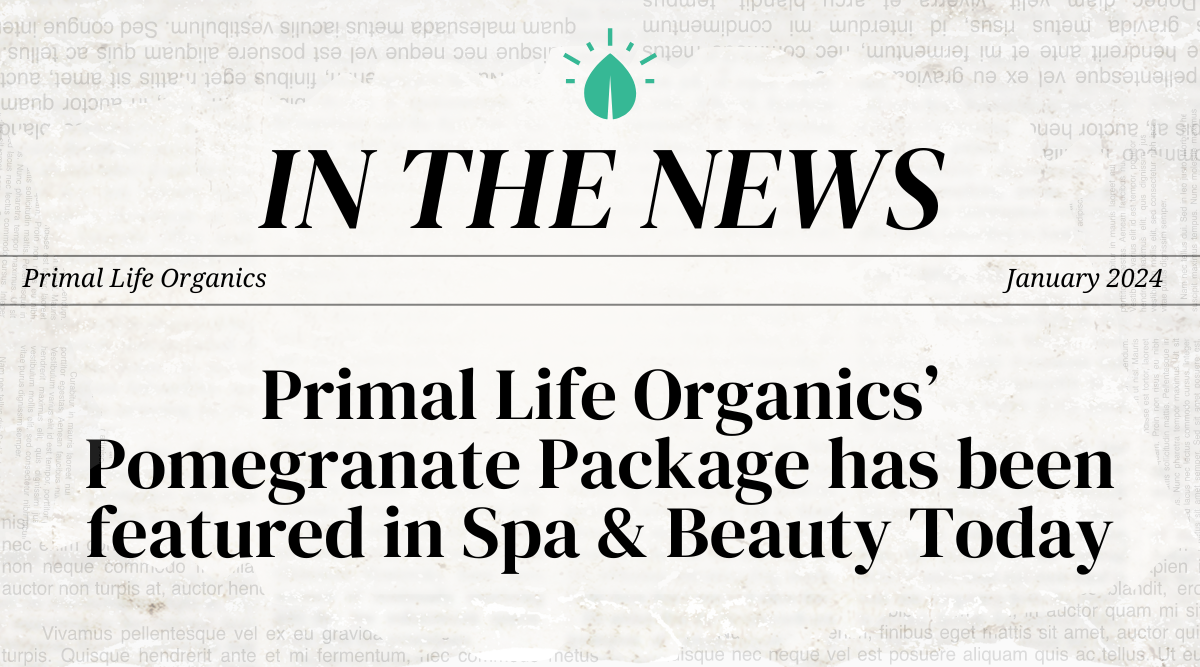
Primal Life Organics' Pomegranate Package has earned the spotlight, featured in Spa & Beauty Today in an article titled, "Spa & Beauty Today’s Winter 2024 Editors’ Picks." Celebrated as a ...
